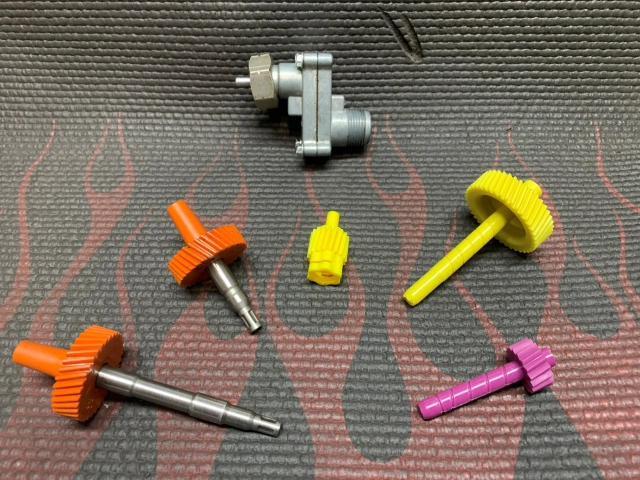Speedometer Calibration
The Art (And Science) Of Speedometer Calibration
My father, who bought Speedometer Service in 1957, was an expert on calibrating speedometers. Along with fellow employee Tom Nixon, they both taught me the ins and outs of mechanical speedometer calibration so we can get your speedometer dialed in.

Most American speedometers are based on 1000 cable revolutions per mile, 60mph and 10/10ths in a mile by the odometer, so that’s the baseline that needs to be established first.
The best way to establish a baseline is to run the vehicle on a measured mile. That’s the way the Stewart Warner books says to start determining what ratio to build to. If you’re turning 12/10ths in a mile, that’s 20% fast. So that’s the error that needs to be addressed by a speedometer driven gear change or a speedometer ratio adapter. A change in tire size rear end gear ratio or transmission change will affect the accuracy of your speedometer.
Speedometer Calibration problem solved – right? Maybe not.
The second way a speedometer is calibrated is by hair spring tension and magnetism in the speedometer itself.
If the speedometer is worn, has a bad jewel in the magnet or has a loss of magnetism, it can read slow or fast by different amounts at different speeds (not a constant amount at all speeds). That’s why you don’t build a gear ratio adapter or do a speedometer driven gear change based on a speed reading alone, even if it’s based on GPS.
Mixing GPS into the equation of speedometer calibration.
I will take a GPS reading along with a measured mile reading and compare the two. If all is right with the speedometer, they should be off by close to the same percentage. If the speed reading is off by a significant amount compared to the measured mile, then there might be two problems. Speedometer is worn and inaccurate as well as the odometer being off in the measured mile.
We have to start by getting the measured mile correct, then see if the speedometer needs work as well.
GPS has been a blessing as well as a curse in this business. I use GPS while running the measured mile to see if the percentages match up. That’s a great tool, but I have also had go-arounds with customers who state that their speedometers are off by 1 mph after I have done a calibration, which in the past (when the cars were designed and produced) they would not have been able to tell.
We have to keep in mind the disconnect between state-of-the-art satellite technology and speedometers that were calibrated using math, cables, springs and magnets. Original calibration specs for cable driven speedometers by manufacturers allowed + or – 3% to 5% variability in accuracy in some cases.
So, your classic car or truck speedometer calibration will more likely not match up to GPS but that is what I will strive for.
Get Help Now!
Need Quality Speedometer, Speedometer Cable, or Tachometer Repair/Rebuilding?

